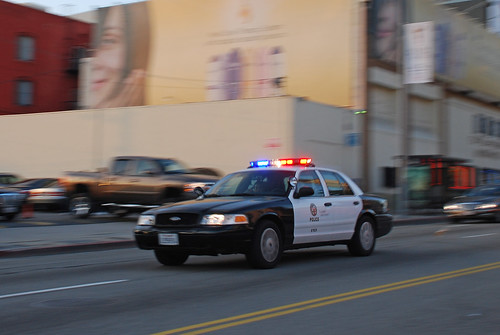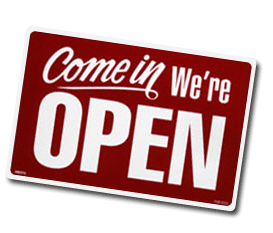
The LA City Council today formally approved the LAPD's new Code 3 policy, which gives all officers discretion in deciding when to respond to a call with lights and siren. Until today, the rules under Chief Bratton's administration had dispatchers assigning one patrol unit a Code 3 response based upon the nature of the 911 call (or request from field units/allied agencies). Other units, including back-up units to emergency calls that already had one unit responding Code 3, were required to respond Code 2 (no lights or sirens). Earlier this month, a council committee had approved changes to the policy.
So, effective immediately, it's up to individual officers to decide what calls will be handled Code 3 and multiple units can respond to the same call Code 3, as well. So, starting tonight, expect to see a lot more LAPD black and whites blasting around the city Code 3.
I remember listening to my scanner 20 years ago (when I had an old Sony brick that I bought from Sporty's Pilot Shop and could only tune in to LAPD's 154.830 HOTSHOT freq.) and being terrified/horrified at the number of seemingly life-and-death level calls that the LAPD dispatchers would send out "Code 2 High" or even Code 2. Back then, it seemed the only thing that warranted a Code 3 response were actual shootings in progress. Otherwise, everything was a much slower response.
When Chief Bratton a few years ago liberalized the Code 3 policy to include pretty much every serious crime you'd expect a cop to respond to with his lights and sirens turned on, I thought that was a huge improvement. Now, if you called 911 in LA, you would get at least one unit running hot (and fast) to come to your aid. This improved response times, raised morale within the department and has helped residents overall.
Allowing more units to respond to more calls more quickly = a good thing overall. It eliminates the dangerous practice of "Code 2.5," which has officers basically driving in an emergency manner without their warning lights activated.
But mark my words: This new policy will be frozen the minute the first LAPD unit responding Code 3 to some bullshit call gets involved in a serious accident--with either civilians or fellow officers. Part of the problem is leaving things like this up to the discretion of patrol officers plays directly into the few bad apples among thousands of good ones theory. This whole thing will be undone by one or two boneheads who drive like the idiots they are.
Ironically, the City Council and LAPD brass pushed for the change because the cost of litigating cases that stemmed from accidents involving LAPD units going Code 2.5 has hit $11 million in the past three years. Only two council members opposed the change--one of them, Ex-LAPD Chief Bernard Parks. I don't really care for Mr. Parks as a councilman and he wasn't a great police chief either, but he's clearly on the right track here and knows what his former officers are capable of. He's rightly worried that putting the greater responsibility of emergency driving along LA's busy streets directly in the hands of the rank-and-file is a recipe for disaster.
Let's just see how long it takes for one to happen.
photo: flickr



